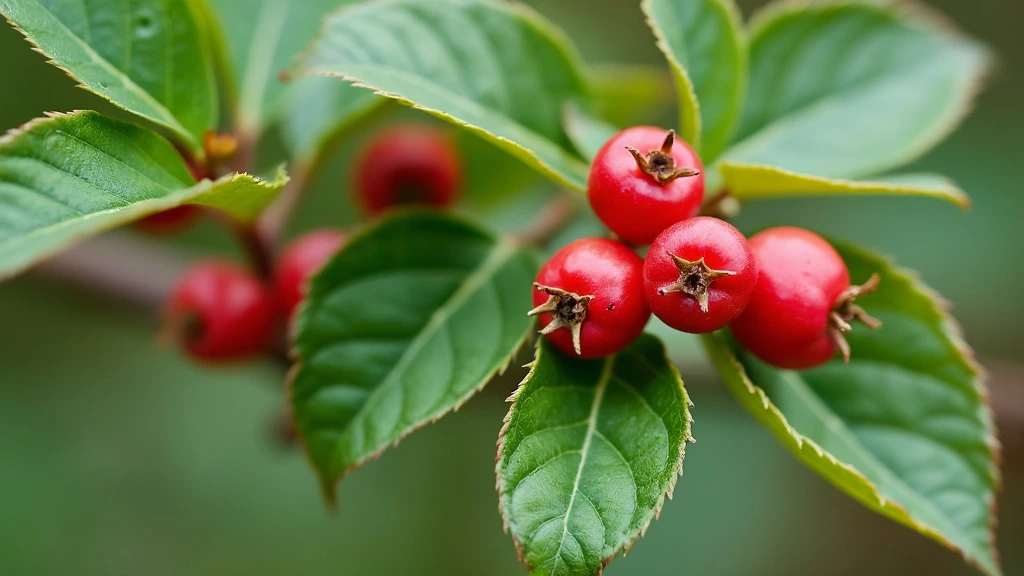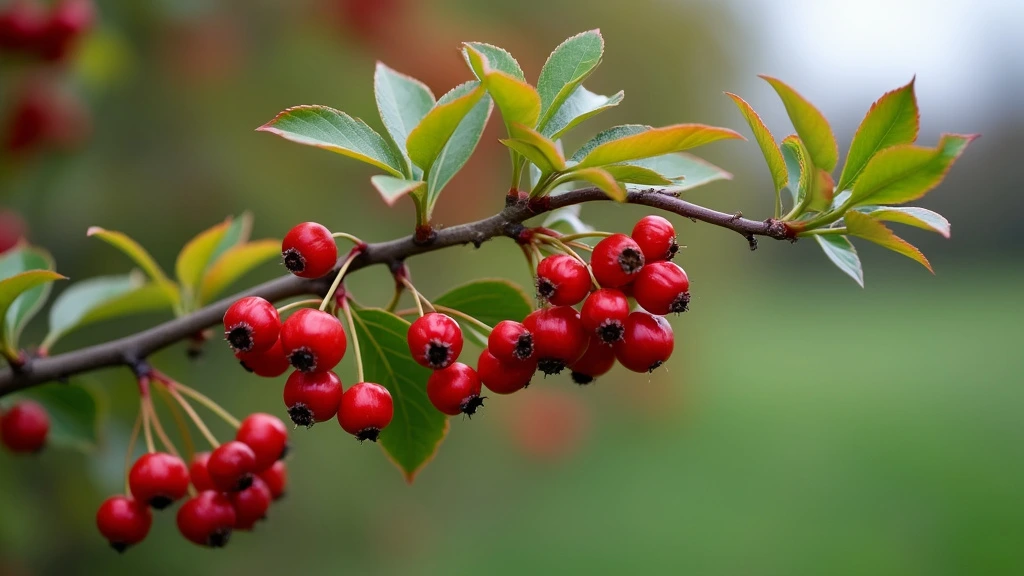Hawthorn is known as heart medicine for its many benefits to cardiovascular health. Its blood-red berries must have given it away as having an affinity to the circulatory system in antiquity. The Hawthorn tree has been revered by the Greeks and Romans as a symbol of hope and happiness for the future. Its bouquets and corsages were used for weddings.
While the Romans believed it kept away evil spirits, branches of Hawthorn tree brought into a home in the Middle Ages meant an omen of death to someone in that house. However, Christian legend has it that the crown of thorns placed on the head of Christ at His crucifixion was made from Hawthorn. Till this day a grove of Hawthorn trees can be found standing on the Mount of Olives, outside Jerusalem.
Greeks used Hawthorn berries for heart disease; the Chinese used it for digestion and circulatory problems; Native Americans sought after it for rheumatism and heart problems, while for many centuries, a poultice of Hawthorn leaves was used to draw out thorns and splinters from the body in England.
Today, Hawthorn is well known as an important drug source. Scientists have found that Hawthorn dilates blood vessels allowing free blood flow, lowers blood pressure, and strengthens the heart. It even helps damaged hearts work more efficiently.
Hawthorn earned its reputation in the medical arena because of its flawless action on one of, if not the most important human organ: the heart. Its mind-boggling safety even in long-term use earned it world-wide acceptance. More so, it has a mild sedative effect which contributes to a healthy heart; as stressful conditions such as anxiety and nervousness are often associated with heart conditions.
Hawthorn displays regulatory effects on blood pressure: it lowers high blood pressure; and raises low blood pressure. It has been shown to enhance coronary circulation and myocardial metabolism, which enables the heart to function with less oxygen. It strengthens the heart for better blood output, and at the same time it enlarges peripheral blood vessels for enhanced circulation.
Hawthorn has also been found useful for reducing cholesterol, and when used in conjunction with Ginkgo Biloba, to enhance poor memory by increasing blood flow and oxygen to the brain. It is also very effective in relieving restlessness and insomnia.

Hawthorn Nutrient Powerhouse
Hawthorn’s most useful part is its fruit: the berries. Which high in bioflavonoid rutin and quercetin. These powerful antioxidants help to decrease and prevent oxidative damage, and strengthen blood vessels as well. Hawthorn owes its action on the circulatory system to the bioflavonoids having dilating effect on blood vessels, causing reduction in blood pressure.
Hawthorn contains a host of other nutrients that work synergistically to benefit the heart and entire body. It can feed and strengthen the heart and arteries making it useful for preventing and treating angina, arteriosclerosis, blood clots, rapid heartbeat, feeble heartbeat, congestive heart failure, coronary heart disease, enlarged heart, hypertension, insufficient peripheral circulation, insomnia, memory problems, and breathing difficulties due to lack of oxygen in the lungs.
Botanical name:
Crataegus oxycantha
Description:
Thorny bush or tree of the rose family standing up to 15 feet tall. Blooms in the spring, mostly in the month of May with clusters of white, cream, or pink or red flowers which the ship Mayflower was named after. Leaves are alternate, lobed or toothed. Fruits are blood-red spherical berries.
Properties:
Alterative, Anti-Spasmodic, Astringent, Cardiac, Cardio alterative, Digestant, Diuretic, Emmenagogue, Hypertensive, Hypotensive, Sedative, Tonic.
Origin:
Unknown. First uses of tree are indicated in biblical days. Records show the crown of thorns on Christ’s head during the crucifixion was made from its branches.
Aliases:
English Hawthorn, Mayflower, May Bush, Mayblossom.
Useful Parts:
Berries, leaves, flowers, and bark.
Uses:
To treat adrenal weakness, angina, arrhythmia, arteriosclerosis, arthritis, blood clots, blood pressure (high and low), edema, heart palpitations, heart weakness, hypoglycemia, irregular heartbeat, menopause, nephritis, rheumatism, sore throat, stress, etc.
Forms:
Capsules (containing dried berries), liquid extract (of berries), powder (from bark), flowers.
Caution:
No known side effect. Considered safe, even for long term use.
Some German medications include Hawthorn extract in them. Some recommend taking Hawthorn as a preventative since it is safe for long term use. Chinese researchers suggest pronounced effects in use over an extended period of time.

Hawthorn berries are also a rich in choline, inositol, vitamins A, B-complex, and C with bioflavonoids. It is a source of two other powerful antioxidants: of anthocyanidins and proanthocyanidins, which have been indicated to increase intracellular levels of vitamin C, prevent collagen damage, decrease capillary fragility, and improve overall cardiovascular health.
There are some critics who suggest that Hawthorn appears to be toxic only in large doses, still making it relatively safe. There are no other known side effects. More researches on the herb continue to unfold its bounty of therapeutic action. While some consider it mere berries, others regard it a mild tonic, and German physicians commonly prescribe Hawthorn for minor heart problems.